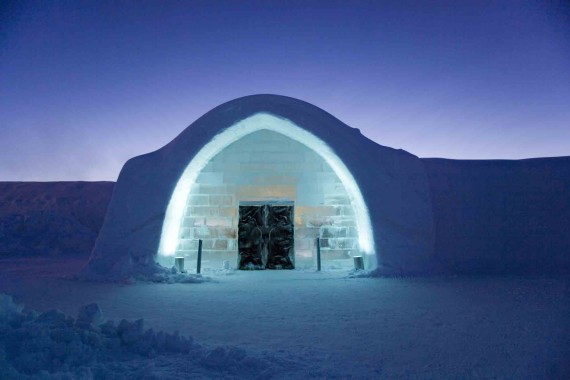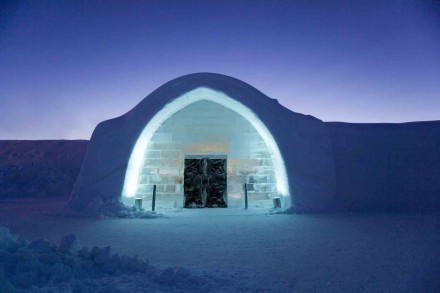
Ice Circle
The Artic circle is home to artist Laila Kolostyak. Ice Circle is Laila’s brainchld, a seminar, a network and workshop with over 20 selected snow and ice professionals from Russia, Finland, Sweden and Norway.
The seminar is funded by Kulturkontakt Nord and the Norwegian Barents Secretariat and aimed to explore how Snow and Ice professionals can raise the profile of their work, as well as collaborate and share knowledge across borders on how to drive successful projects of all scales; from installations in nature parks, to interior and architectural design, to urban planning and urban reclamation and festival planning.
Keynote speakers included leading professionals such as Timo Jokela from the University of Lapland, Rovaniemi, known decades of spectacular land art, Jens Toms Ivarsson, Design Director at the world-famous ICEHOTEL in Jukkasjärvi, Sweden and Ole Morten Rokvam, an artist and craftsman who has curated leading events with snow and ice in Norway for over a decade. In addition, the artists from Kirovsk and Murmansk were exceptionally inspiring, sharing their festival and community work and bringing a lot of love and live music.
Jens Thoms Ivarsson talks about ice as a material.
“Imagine: the earth was created at some point, some billions of years ago. The water we are working with could have come from a comet- its ancient and essential stuff. Two different materials met and collided, basically stone and water. They became a frozen moment. Hot lava froze into stone, and water turned into ice. It’s this moment of change that artists and designers often explore in the materials and contexts they work with. Moments of change. Tipping points. How materials age next together. How they behave. It’s fundamental stuff, but ice also teaches us about the nature of continuous change. The seasons, nature’s needs, human needs in winter climates, and of course, climate change. These are new frontiers for design in general. We always think about the negative aspects of snow and ice, how to get rid of it, how to avoid it. We’ve hardly scratched the surface of how to use it as a material.”
How long is something ephemeral? “It’s a good question. It all depends on the point of view, the objectives of a project. We follow the melting process of the ICEHOTEL too- it is so beautiful. We spend so long making details, crafting interiors and design elements –always knowing it will melt and return to the river again. And during the process, the sound changes in the building, the atmosphere is fantastic. It’s not sad- its liberating. The ice hotel doesn’t collapse, it opens up in the centre to reveal the sky and the surroundings of the place where it started. There is so much new knowledge to be gained about snow and ice.”
But there is a high risk of making mistakes working with such a volatile material? “Yes – but the volatility also opens possibilities. Designers always ask “How do I avoid mistakes?” Ernst Billgren’s book ‘Vad är Konst 2’ (What is art 2) says that the short answer is to sit very still! As soon as humans do something there are mistakes, but mistakes also lead to discoveries. All our genetic development and success is built on learning from mistakes. When I work in stone or concrete and it is placed in city, there is a lot of pressure as the object will lasts for a lifetime. Working in snow and ice is very freeing in a way. You can be more brave and experimental. Less self conscious and more playful.”
How do you work with seasons of water and light at the ice hotel in Jukkasjärvi? “You’d think it all happens in the winter as the focus is on ice art but we are moving to all year round. In the summer there is rafting, fishing and other nature activities and the phenomenon of the sun never setting at night- that is a very special experience to have. Also we are preparing for the water to freeze long before it does. It’s the pivotal moment for us, as we invite artists from all over the world. And those artists are not all traditional ice sculptors. We work with people from all background to explore what they can create with ice as a material.
We can also funnel water from the river, and blow it through snow canons to create a material we call “snice” –manufactured snow. We can throw snow onto moulds. Sometimes we use reinforcement to create very large structures. We are also learning more ever year about how to use ice reinforcement. The old way is to create giant moulds for architectural structures where the walls are built with plywood moulds and filled with snice, much like the process for creating concrete buildings. By exploring ice reinforcement we open new doors to resourceful innovation in architecture.”
How many people are involved in constructing the ICEHOTEL in Jukkasjärvi every year? “At the ICEHOTEL we have a team of over 50 people who work on the structure alone. Then there is all the finishing work on interior design, lighting and so on. Tools and methods are developing all the time and its important to share this knowledge.
Focus on working together is important – the joy comes when it is finished! One of the hardest jobs is being on roof in minus 35 connecting wires without gloves. It’s the engineers, technicians and ice workers we really have to thank! They make these ideas possible.”
What other type of work do you do there? “One example is that we send ice and snice all over world- and send our engineers to make large events possible. For examples we created a catwalk for Chanel at the Grand Palais in Paris. We needed to install a cooling system for the 40 m long 8 m high catwalk. Karl Lagerfeld ordered it. We had to tell him not to wear boots not to get wet. He was great fun to work for. We asked him to lick the ice and he obliged!”

One of my favourite projects that you showed at the seminar was the roundabout you made in a lake. “Yes, we cut out a huge disc in the river and added a boat engine. It was a simple intervention to see if the disc would rotate – and it did! It rotated at a perfectly even speed. It worked out better than we anticipated it would. Nature is like that.”


